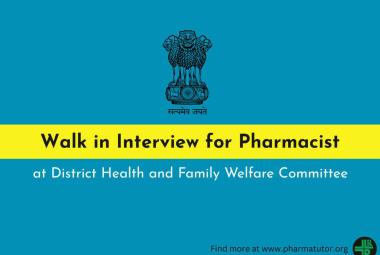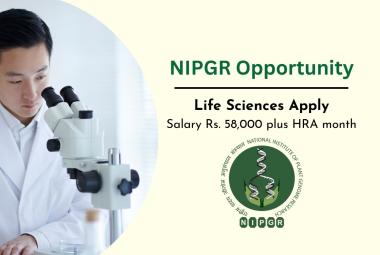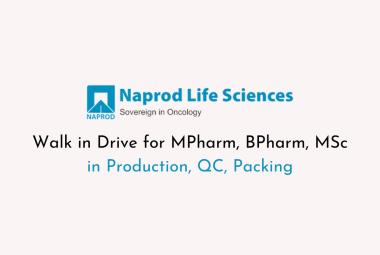Question Paper of Pharmacology for Jharkhand Public Service Commission (JPSC) - 2013
1. What the body does to the drug is called as
(A) Pharmacodynamics Pharmacokinetics
(C) Pharmacogenomics
(D) Pharmacotherapeutics
[adsense:336x280:8701650588]
2. The science of detection, diagnosis and treatment of poisoning is called as
(A) toxicology
(B) clinical toxicology
(C) toxicodynamics
(D) toxicokinetics
3. Nitroglycerine can be adminis-tered through the following route of drug administration to avoid its first pass metabolism
(A) Oral
(B) Rectal
(C) f Sublingual
(D) Inhalation
4. Morphine bioavailability may be increased by its
(A) first pass elimination
(B) ionization
(C) enterohepatic cycling
(D) All of the above
5. Digoxin produces cardiac arrhyth¬mias as a cardiac adverse effect which is due to
(A) disturbed impulse formation
(B) disturbed impulse conduction
(C) Both (A) and (B)
(D) None of the above ‘ -
6. The term is used clinically to
describe a medical emergency caused by allergy to a variety of agents.
(A) prophylaxis
(B) anaphylaxis
(C) trauma
(D) proteolysis
7. A non-selective (3-adrenoceptor antagonist with additional a!-blocking activity is
(A) carvedilol
(B) propranolol
(C) atenolol
(D) oxprenolol
8. Obesity is measured by BMI (Body Mass Index) and the following is the ideal range of it
(A) 25 0-29-9 kg/m2
(B) 30-0-39-9 kg/m2
(C) 18-5-24-9 kg/m2
(D) 18-5-40-0 kg/m2
9. GABAB subtype receptor belongs to the following receptor type
(A) Ligand-gated channel
(B) Voltage-gated channel
(C) Calcium-release channel
(D) G-Protein-Coupled receptor
10. Which of the following oral hypoglycemic agents will reduce carbohydrate absorption and cause flatulence?
(A) Tolbutamide
(B) Glibenclamide
(C) Rosiglitazone
(D) Acarbose
Go to "Next Page" for more questions...
Subscribe to Pharmatutor Job Alerts by Email
11. Ketamine, a non-barbiturate general anaesthetic agent, induces complete analgesia combined with amnesia is called as
(A) neuroleptanalgesia
(B) dissociative anaesthesia
(C) infiltration anaesthesia
(D) None of the above
12. The antibiotic ciprofloxacin causes
(A) inhibition of cell wall synthesis
(B) leakage of cell membranes
(C) inhibition of protein synthesis
(D) inhibition of DNA gyrase
13. Chloramphenicol was the drug of choice for typhoid fever, its major adverse effect is
(A) bone-marrow depression
(B) hypersensitivity reactions
(C) gray-baby syndrome
(D) All of the above
14. In chronic alcoholism, the antagonist used is
(A) N-acetylcysteine
(B) disulfiram
(C) aspirin
(D) phenobarbitone
15. ‘Co-trimoxazole ’ is the combina-tion of trimethoprim and sulfa-methoxazole in the ratio of
(A) 2:3
(B) 5 : 1
(C) 1:5
(D) 3 : 2
16. The calcium channel blocker verapamil is a
(A) class LA antiarrythmic drug
(B) class II antiarrythmic drug
(C) class III antiarrythmic drug
(D) class IV antiarrythmic drug
17. The drug which will inhibit MAO-B irreversibly and used in Parkinson’s disease is
(A) selegiline
(B) bromocriptine
(C) pergolide
(D) amantadine
18. The relative nephrotoxicity among
NSAIDs is
(A) indomethacin > fenoprofen > ibuprofen
(B) fenoprofen > indomethacin > ibuprofen
(C) ibuprofen > indomethacin > fenoprofen
(D) mefenamic acid > fenoprofen > indomethacin
19. The main adverse effect of angiotensin converting enzyme inhibitor enalapril is
(A) diy cough
(B) bone-marrow depression
(C) Both (A) and (B)
(D) None of the above
20. Which of the H2 receptor blockers, used as an anti-ulcer agent, has anti-androgenic action?
(A) Famotidine
(B) Roxatidine
(C) Ranitidine
(D) Cimetidine
21. Which of the following acts as an agonist on morphine k receptors and has weak antagonist activity at p and 8 receptors?
(A) Buprenorphine
(B) Pentazocine
(C) Propoxyphene
(D) Tramadol
22. A non-cardioselective beta adrenergic blocking agent with beta blocking potency similar to that of propranolol and which has no membrane stabilizing action is
(A) atenolol
(B) esmolol
(C) sotalol
(D) betaxolol
23.______is a symptom which arises
when there is an imbalance between the demand for oxygen and its supply to the myocardium.
(A) Hypertension
(B) Angina pectoris
(C) Neutropenia
(D) Meningitis
24. Which of the following is a systemic antacid used in alkalosis condition?
(A) Sodium bicarbonate
(B) Aluminium hydroxide gel
(C) Magnesium trisilicate
(D) Calcium carbonate
25. Plantago seeds which are used in constipation belong to the class
(A) stimulant laxatives
(B) osmotic laxatives
(C) bulk laxatives
(D) irritant laxatives
Go to "Next Page" for more questions...
Subscribe to Pharmatutor Job Alerts by Email
26. Sildenafil is used in erectile
dysfunction. It is an inhibitor of enzyme.
(A) phosphodiesterase 3
(B) phosphodiesterase 4
(C) phosphodiesterase 5
(D) adenyl cyclase
27. Anti-dopaminergic anti-emetic agent is
(A) cyclizine
(B) scopolamine
(C) metoclopramide
(D) ondansetron
28. The following is a drug which is an HMG-CoA-reductase inhibitor, used as lipid lowering drug
(A) Cholestyramine
(B) Gemfibrozil
(C) Omega 3-PUFA
(D) Rosuvastatin
29.__________is a chronic disorder characterized by loss of appetite and self-induced weight loss, accompanied by psychological and physiological alterations in the body.
(A) Pancreatitis
(B) Anorexia nervosa
(C) Hepatitis
(D) Cirrhosis
30. A state in which- the kidney’s ability to maintain homeostasis has declined suddenly, with resultant retention of metabolic waste products as well as electrolytes, is
(A) metabolic acidosis
(B) metabolic alkalosis
(C) acute renal failure
(D) hypochloremic alkalosis
31. Treatment of hypoglycemia in unconscious patients can be achieved with
(A) insulin
(B) somatostatin
(C) glucagon
(D) octreotide
32. Irritable bowel disease (IBS) can be treated with
(A) prednisolone
(B) mesalazine
(C) azathioprine
(D) All of the above
33. Hyponatremia is a condition caused in the body due to
(A) high plasma sodium concen-tration
(B) low plasma sodium concen-tration
(C) low plasma nitrogen concen-tration
(D) low plasma potassium concentration
34. Tolvaptan used in the treatment of hyponatremia is an antagonist of
(A) aldosterone
(B) Na+/K+ ATPase
(C) anti-diuretic hormone
(D) carbonic anhydrase
35. Aplastic anemia is caused due to
(A) derangement of blood cells function
(B) increased destruction of blood cells
(C) impaired production of blood cells
(D) None of the above
36. The common name of pteroyl- monoglutamic acid is
(A) folic acid
(B) paraaminobenzoic acid
(C) acetysalicylic acid
(D) glutamic acid
37. Among the following, which one is a potent and specific chelator of iron used in the treatment of iron poisoning?
(A) Desferrioxamine
(B) Disulfiram
(C) Erythropoietin
(D) Ferric gluconate
38. In gastroesophageal reflux disease, which one of the following will be more effective?
(A) Anti-secretory agent— cimetidine
(B) Proton pump inhibitor— omeprazole
(C) Mucosal protective agent— sucralfate
(D) Prostaglandin E analogue— misoprostol
39. ‘Zidovudine’ anti-viral agent acts as
(A) nucleoside reverse trans-criptase inhibitor
(B) DNA polymerase inhibitor
(C) non-nucleoside reverse transcriptase inhibitor
(D) protease inhibitor
40. A very insoluble fungistatic drug which can be used in the systemic treatment of dermatophyte infections of the skin and nails is
(A) amphotericin A
(B) fluconazole
(C) terbinafine
(D) griseofulvin
Go to "Next Page" for more questions...
Subscribe to Pharmatutor Job Alerts by Email
41. Dose-dependent nephrotoxicity is the major significant toxic reaction for the anti-fungal agent
(A) flucytosine
(B) clotrimazole
(C) amphotericin B
(D) ketoconazole
42. Which of the following combi-nation of drugs is most active and effective in treating tuberculosis?
(A) Isoniazid and pyrazinamide
(B) Isoniazid and ethambutol
(C) Streptomycin arid rifampicin
(D) Isoniazid and rifampicin
43. Cefotaxime is a cephalosporin belongs to
(A) first-generation sporins
(B) second-generation sporins
(C) third-generation sporins
(D) fourth-generation sporins
44. Identify the synthetic lipo- glycopeptide antibiotic that is effective against methicillin resistant S. aureus (MRSA).
(A) Daptomycin
(B) Telavancin
(C) Cycloserine
(D) Meropenem
45. Gliptins are synthetic blood glucose lowering agents, which are known to inhibit
(A) GLP-1
(B) dipeptidylpeptidase
(C) alpha glucosidase
(D) PPARy
46. Any abnormality in glucose levels noted for the first time during pregnancy is called as
(A) type 1 diabetes mellitus
(B) type 2 diabetes mellitus
(C) type 3 diabetes mellitus
(D) gestational diabetes mellitus
47. Conversion of protein to glucose is called as
(A) glucogenesis
(B) glycosuria
(C) gluconeogenesis
(D) glycogenolysis
48. Propylthiouracil is used in
(A) hypothyroidism
(B) hyperthyroidism
(C) cretinism
(D) myxedema
49. A loop diuretic can be used in the treatment of
(A) acute pulmonary oedema
(B) chronic heart failure
(C) renal failure
(D) All of the above
50. An anabolic agent, which increases bone formation, is
(A) strontium ranelate
(B) teriparatide
(C) etidronate
(D) calcitonin
51. Among the clotting factors, which one is called as Stuart power factor?
(A) Factor V
(B) Factor XI
(C) Factor IX
(D) Factor X
52. The mechanism of action of digitalis glycosides is inhibition of
(A) Ca-dependent Na+/K+
ATPase enzyme activity
(B) Mg-dependent Na+/K+
ATPase enzyme activity
(C) K+-dependent Na+/K+
ATPase enzyme activity
(D) Na+-dependent Na+/K+ ATPase enzyme activity
53. Edrophonium, which is an important agent, is used in the diagnosis of myasthenia gravis. This drug is
(A) a short-acting cholinesterase inhibitor
(B) an ultra-short-acting cholin¬esterase inhibitor
(C) a long-acting cholinesterase inhibitor
(D) a non-cholinesterase inhibitor
54. The triad of coma, pinpoint pupils and depressed respiration are the symptoms and signs of
(A) acute opioid poisoning
(B) organophosphorus poisoning
(C) benzodiazepine poisoning
(D) None of the above
55. Identify the opioid antagonist.
(A) Tapentadol
(B) Hydrocodone
(C) Naltrexone
(D) Meperidine
Go to "Next Page" for more questions...
Subscribe to Pharmatutor Job Alerts by Email
56. The drug of choice for the treatment of absence seizures is
(A) ethosuximide
(B) valproic acid
(C) phenytoin
(D) phenobarbitone
57. An anti-histamine that exhibits a mild CNS-depressant action and has wider margin of safety, also used in psychoneurotic states, is
(A) chlorpromazine
(B) hydroxyzine
(C) cetrizine
(D) chlorpheniramine maleate
58. Which of the following drugs is an odourless gas used as anaesthetic agent?
(A) Nitric oxide
(B) Nitrous oxide
(C) Thiopental
(D) Propofol
59. ____ is a disease which is an inherited disorder resulting in progressive brain degeneration, starting in adulthood and causing rapid deterioration and death.
(A) Parkinson’s disease
(B) Huntington’s disease
(C) Alzheimer’s disease
(D) Ischaemic brain disease
60. Among the following, which drug is not suitable for the treatment of Parkinson’s disease?
(A) MAO-B inhibitor
(B) Drug that releases dopamine
(C) Cholinesterase inhibitor
(D) Muscarinic acetylcholine receptor antagonist
61. The route of administration used to administer diazepam to children who are in status epilepticus, in whom it is difficult to establish intravenous access, is
(A) sublingual route
(B) rectal route
(C) oral route
(D) inhalationai route
62. _________ is a special type of bioassay done to compare the clinical efficacy of a new drug or procedure with that of a known drug or procedure (or a placebo).
(A) Graded bioassay
(B) Quantal bioassay
(C) Clinical trial
(D) None of the above
63. A cell suicide by a built-in self- destruct mechanism consisting of a genetically programmed sequence of biochemical events is called as
(A) angiogenesis
(B) apoptosis
(C) necrosis
(D) None of the above
64. Many diuretics predispose to digoxin toxicity due to
(A) lower plasma K+ levels
(B) lower plasma Na+ levels
(C) lower plasma Ca+2 levels
(D) lower plasma Mg+2 levels
65. Aminoglycoside’s main adverse drug reaction is
(A) hepatotoxicity
(B) tinnitus
(C) teratogenicity
(D) ototoxicity
66. Platelet anti-aggregatory action is produced by aspirin, but not to a significant extent by other salicylates. This is due to its
(A) amino group
(B) acetyl group
(C) nitro group
(D) None of the above
67. Fludrocortisone is used in the treatment of
(A) Addison’s disease
(B) peptic ulcer disease
(C) tuberculosis
(D) diabetes mellitus
68. Which of the following causes drug-induced hyperglycemia?
(A) Disopyramide
(B) Alcohol
(C) Phenytoin
(D) Pentamidine
69. A serious complication of long standing untreated hypothy-roidism is
(A) myxedema coma
(B) endemic goitre
(C) dwarfism
(D) thyroid carcinoma
70. From the following drugs, which one is most effective in treatment of breast cancer?
(A) Flutamide
(B) Progestin
(C) Tamoxifen
(D) Baclofen
71. An antibiotic with anti-cancer properties is
(A) doxorubicin
(B) azithromycin
(C) erythromycin
(D) clarithromycin
Go to "Next Page" for more questions...
Subscribe to Pharmatutor Job Alerts by Email
72. The folic acid antagonistic, aaiti- cancer agent which is also used in rheumatoid arthritis is
(A) azathioprine
(B) busulfan
(C) methotrexate
(D) fluorouracil
73. Filarial infections caused by parasites that lead to elephan-tiasis are treated with
(A) albendazole and mebendazole
(B) diethylcarbamazine and ivermectin
(C) albendazole and ivermectin
(D) ivermectin and mebendazole
74. The drug of choice in round- worm infections that is widely used as a single dose deworming agent is
(A) mebendazole
(B) albendazole
(C) ivermectin
(D) praziquantel
75. An anthelmintic agent which affects the worm in such a way that it is easily expelled from the body is known as
(A) fungicidal
(B) fungistatic
(C) vermifuge
(D) vermicidal
76. A specific cellular glycoproteins, produced naturally by virus- infected cells, and have anti-viral actions. They are known as
(A) prostaglandins
(B) leucocytes
(C) gamma globulins
(D) interferons
77. Identify the teratogenic drug.
(A) Gentamicin
(B) Etretinate
(C) Chloramphenicol
(D) Methyldopa
78; Drug miltefosine is highly effective in the treatment of
(A) tuberculosis
(B) leishmaniasis
(C) leprosy
(D) AIDS
79. The triple response observed upon intradermal injection is the characteristic nature of
(A) histamine
(B) dopamine
(C) adrenaline
(D) ketamine
80. Catecholamines are synthesized from the amino acid
(A) cystine
(B) phenylalanine
(C) proline
(D) glycine
81. A muscarinic blocker used as a bronchodilator is
(A) tolterodine
(B) scopolamine
(C) ipratropium
(D) cyclopentolate
82. A diuretic agent widely used in closed angle glaucoma is
(A) acetazolamide
(B) furosemide
(C) chlorothiazide
(D) spironolactone
83. A Pi-selective blocker which is having less bronchopulmonaiy and cardiac side effects, also used in glaucoma, is
(A) timolol
(B) propranolol
(C) betaxolol
(D) esmolol
84. Myasthenia gravis is an auto-immune disorder, caused due to development of antibodies which are known to destroy the
(A) muscarinic receptors
(B) nicotinic receptors
(C) Both (A) and (B)
(D) None of the above
Go to "Next Page" for more questions...
Subscribe to Pharmatutor Job Alerts by Email
85. The process of a tissue-damaging immune response directed specifically and inappropriately against one or more self- antigen(s) is /are called as
(A) immunity
(B) autoimmunity
(C) tachyphylaxis
(D) prophylaxis
86. Penicillin half-life can be increased by decreasing the rate of excretion (by active tubular secretion), using a weak acidic agent
(A) paraaminohippurate
(B) paraaminobenzoic acid
(C) probenecid
(D) acetylsalicylic acid
87. The primary hormone respon-sible for controlling breast milk production is prolactin and the drug that decreases serum prolactin level is
(A) metoclopramide
(B) sulpiride
(C) bromocriptine
(D) haloperidol
88. Binding to the peroxisome proliferator-activated receptor y in muscle, fat and liver to decrease insulin resistance is the main mechanism of action of
(A) acarbose
(B) metformin
(C) glimepiride
(D) rosiglitazone
89. Emesis associated with cancer is treated with
(A) granisetron
(B) ondansetron
(C) metoclopramide
(D) All of the above
90. Aztreonam is a
(A) carbapenem
(B) monobactam
(C) macrolide
(D) ketolide
91. Drug that used to treat migraine headache is
(A) sumatriptan
(B) misoprostol
(C) cyclizine
(D) doxepin
92. The antidotes for organo- phosphate poisoning are
(A) atropine and pralidoxime
(B) atropine and physostigmine
(C) atropine and A-acetylcysteine
(D) atropine and dimercaprol
93. The main mechanism of action of lamivudine is
(A) inhibition of polymerase viral DNA
(B) inhibition
neuraminidase of viral
(C) inhibition of viral DNA polymerase and transcriptase reverse
(D) interference protease with viral
94. Among the following, which one is immunosuppressive anti-metabolite?
(A) Cyclosporin
(B) Azathioprine
(C) Prednisolone
(D) Tacrolimus
95. A PGF2ot analogue used in the treatment of elevated intra¬ocular pressure is
(A) iloprost
(B) alprostadil
(C) latanoprost
(D) misoprostol
96. Acetaminophen has less or weak anti-inflammatory activity which is due to
(A) less effect on prostaglandins
(B) less effect on cyclooxygenase
(C) less effect on pain receptors
(D) less effect on cytokines
97. The specific antidote for paracetamol poisoning is
(A) flumazenil
(B) misoprostol
(C) JV-acetylcysteine
(D) physostigmine
98. An angiotensin receptor blocker is
(A) captopril
(B) ramipril
(C) telmisartan
(D) minoxidil
99. Among the following drugs, which one belongs to class III, K+ channel blocking anti-arrhythmic agents?
(A) Diltiazem
(B) Verapamil
(C) Amiodarone
(D) Propranolol
100. An aldosterone antagonist used in heart failure and Conn’s syndrome is
(A) diazoxide
(B) bumetanide
(C) eplerenone (D) furosemide









